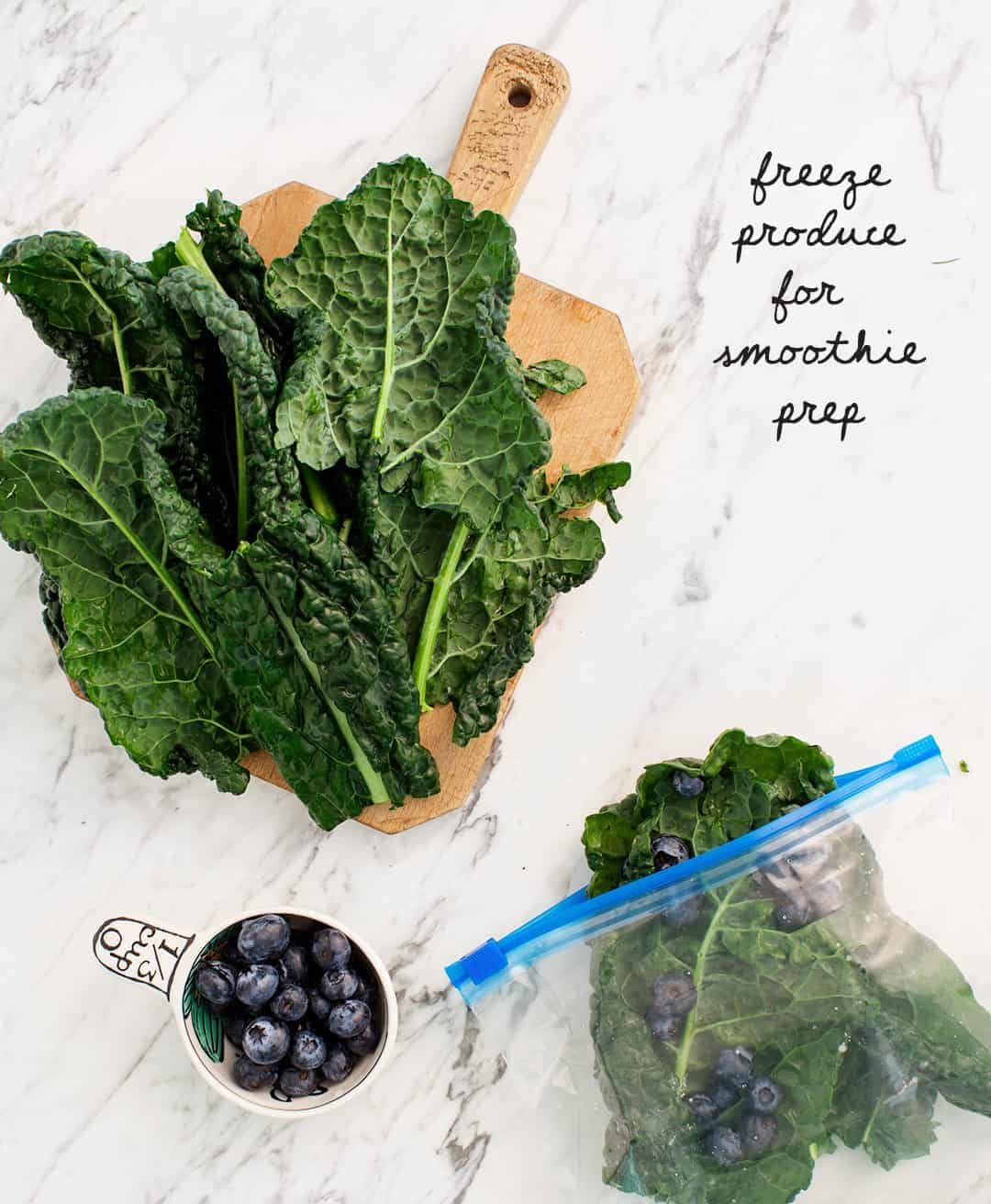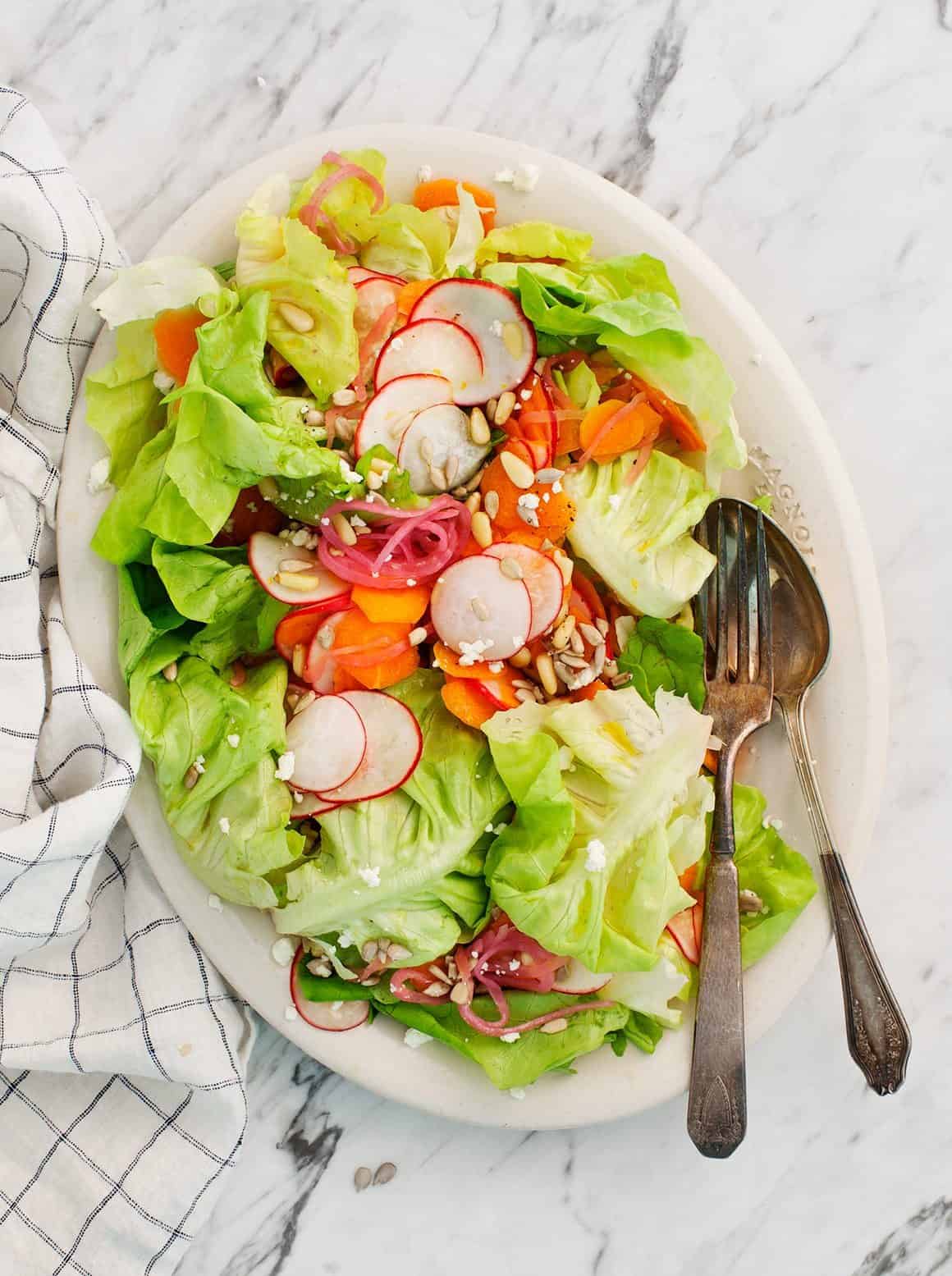
I’ve talked about this over and over on here, but one of my favorite ways to incorporate fresh produce into my meals is through my local Texas CSA delivery that I get bi-weekly. The fruits and vegetables are grown from local farms and when my “bushel” arrives, the contents are always a surprise! There’s no better way in my opinion to eat hyper local than by signing up for a local CSA box – and they can be found all over the country. BUT – I’ll be honest – sometimes it can be a bit daunting. Finding ways to eat and store the vegetables before they go bad is something that stresses me out a little. Knowing that someone near me carefully grew and picked that lettuce or those beets makes me feel responsible for treating them well.
Today I’m partnering with Sub Zero on their Fresh Food Matters initiative to share tips about how to eat more real, fresh food. These days there’s an overwhelming amount of information when it comes to what we should and shouldn’t eat, but I think everyone can agree that fresh, whole foods are central to health, culture, community, and the environment. The goal for today is to share a few simple tips about how I utilize the fresh food in my CSA delivery.
Pictured above is the box I received a few weeks ago. I have to say – this one was a beaut. Soft butter lettuce, fresh blueberries, radishes, carrots, kale, and the biggest beet I’ve ever seen. Buried under those things was a fennel bulb, a pile of zucchini, and summer squash.

Here’s how I approached this box, and how I generally approach every box:
1. Sample. Try out the merchandise so you really know what you’re working with. Look at those blueberries! These were the first of the season, so I ate most of those before I could put them away.
2. Sort & Store. Sort everything into bags and store (most things) in the fridge while you figure out what to make. Cut the tops off of carrots and beets and store them all separately so that each piece of the vegetable will last longer. I store sweet potatoes and winter squash on the countertop, but most spring produce does best in the fridge.
Right now, I re-use the grocery store produce bags but I really want to try out a more sustainable solution. Vegetables from the farm can often be really dirty, so mesh or cloth bags aren’t going to be my solution – if you have a suggestion, feel free to leave it in the comments!
Also, contrary to what most people say, I don’t like to wash my produce right when I get it. I find that it lasts longer if it is protected by its dirt. Once it’s washed, veggies start to get soft and limp faster.
3. Plan & Brainstorm. Make a list of the contents of the box and start brainstorming what to make. It’s easy to forget what came once it’s stowed away in the fridge, so I like to sort this out on paper. My general rule of thumb is to start thinking about the softer vegetables first (lettuce, greens) and worry about the sturdier vegetables (beets, radishes), second. If you need help deciding what to make, browse our recipe index “by ingredient,” and that will help get you started.

4. Chill Out. If you’re overwhelmed by certain ingredients, it’s ok to freeze them for later. I’ve been eating a lot of kale salads lately, so this time I froze the kale for my morning smoothies throughout the week.
5. Prep, cook and eat. Make some food! Here’s how I used the various ingredients in this bunch:
– Kale: this time, since I had so many vegetables in this box, I froze the kale for my morning smoothies along with some of the leftover blueberries. (More kale recipes here).
– Zucchini and yellow squash: I made a dish similar to this recipe – I tossed thin slices of zucchini and yellow squash with pesto and lots of lemon. Here are some other ideas: a knockout Summer Squash Tian, a One Pot Pasta, or Zoodles!


– Beets: I just made a simple beet hummus that I used throughout the week for sandwiches and snacks.
– Fennel: I thinly sliced it and baked it on top of cheesy flatbread with the remainder of the blueberries.
– Lettuce, carrots and radishes: I made a big tangy Farmhouse Spring Salad that I brought to Jack’s family’s Sunday dinner. (Scroll down for the recipe).

Jack’s mom loves radishes so I sliced the radishes and carrots really thin. I then tossed them in a simple dressing with some pickled onions and let them soften while I washed and dried the butterhead lettuce. I tossed it all together with pine nuts, sunflower seeds, and feta cheese. It was a great, crunchy, light side salad.

Do you get a CSA box? What are your tips?
Spring Farmhouse Gem Lettuce Salad
- 6 small or 3 large carrots
- 6 radishes
- ¼ cup quick pickled onions* (see below)
- 2 tablespoons fresh lemon juice
- 1 teaspoon fresh orange zest
- Extra-virgin olive oil, for drizzling
- 1 bunch Bibb, butterhead, or gem lettuce, washed & dried well
- 1 tablespoon pine nuts, toasted if desired
- 1 tablespoon hulled sunflower seeds
- 2 tablespoons crumbled feta cheese, optional
- Sea salt and freshly ground black pepper
- Thinly slice the carrots and radishes. I like to use a mandolin to get paper thin slices. Place them in a large bowl with the pickled onions, lemon juice, orange zest, a drizzle of olive oil and a few generous pinches of salt and pepper. Mix and let sit for 10 minutes.
- Tear the larger pieces of the Bibb lettuce into bite size (but not too small) pieces. Add to the bowl with the radishes and carrots and toss to coat. Season to taste with more salt and pepper, if desired.
- Transfer to a platter and top with the pine nuts, sunflower seeds, feta cheese and another drizzle of olive oil, as desired. Serve immediately.
Special thanks to Sub Zero & Wolf for partnering on this post. Be sure to check out FreshFoodMatters.com (specifically this video about a Texas farmer who grows for a CSA!) for more tips about shopping and storing seasonal produce, and share your tips using #FreshFoodMatters. All opinions and images are my own – thank you for supporting the sponsors that keep us cooking!








I know you haven’t had great luck, but I wash most of my CSA immediately upon arrival. The keyword being most. Greens other than collards, cabbage, or anything porous like mushrooms don’t get washed. Zucchini and squash only get a quick dunk, not a soak. I fill my (freshly scrubbed) sink with water and some white vinegar and give everything a quick soak (10-15 mins) then scrub where necessary. The other key that everything must be DRY before it gets put up – I lay it out in 1 layer on a towel and point a little countertop fan at it for a bit. Everything will last at least 2 weeks.
Thank you for the tips!
Great post. My CSA starts next week and I feel the same way about making sure I use everything in it. It breaks my heart to throw any of it away!!!
So, I sell Tupperware. I have a product called Fridge-Smart which is a small crisper. http://smboede.my.tupperware.com
I also subscribe to a CSA and these have been a lifesaver for the shelf life of my organic produce. There is a picture on the side that tells you what to set the humidity control to. AND you can mix produce within the same setting to save space. Seriously, strawberries can last over a week, and I’ve had mushrooms last 3 weeks! Check it out at the link above.
How do you freeze Kale ? Do you need to blanch it first?
I just wash it really well and dry it. I like to use a veggie wash, right now i’m using the one that Honest Company makes. I use the frozen kale in my smoothies raw, and just yesterday i used it in a soup (crushed the frozen kale with my hands and stirred it in near the end). I hope that helps!
I don’t have a CSA, but I do have a large veggie garden, and my strategy is similar: immediate triage. Decide what to eat fresh (keeping in mind that more is coming soon) and what to preserve (freeze, can, pickle, dehydrate) for later. Since I try to grow enough to keep me through the winter, sheer volume means that I do a lot of preserving for later. I especially like to preserve cooking components: salsas, sauces, prepped packs of ratatouille vegetables, etc. A little more work at the front end saves work on the back end.
This Spring Farmhouse Gem Lettuce Salad is great. I’m on diet and these recipes will be very useful.
This is pretty close to my strategy for a CSA haul. I usually get a list of what’s coming the day before, so I’ll start brainstorming, and maybe even buy a couple ingredients in advance, so I can put the produce to use as soon as it arrives. I frequently use the freezer when I’m feeling overloaded, particularly for greens, which can be cooked, then mixed into a million things when defrosted.
I also find that it’s helpful to prepare foods (beet hummus, zucchini bread, or veggie soup) and freeze them, since raw veggies can seem like a lot more work than pulling something out of the freezer when hungry.
I think what makes a simple recipe divine is using all fresh ingredients. This was very easy and very tasty!
Looks yummy! I store all of my produce in what is called Forever Bags. They can be rewashed and reused 30-40 times. It really keeps the produce crisp and makes it last a lot longer. I have been using them for years and love them when csa shares come in.
Great article! I love our local CSA and as always, your salad looks amazing!
This salad looks so good!
Jeanine, I love your CSA tips. I don’t think I’ve seen anything quite as thorough as your post. And freezing kale for smoothies is a great idea. I always keep reminding my clients that their freezer is their best friend. 😉 And keeping this fresh, tangy salad on the list for the the warm months to come!
Jeanine, where do you get your CSA? I’m new to Austin and haven’t found a good one yet.
Hi Julia – I like the Farmhouse Delivery.
Johnson’s Backyard Garden in Austin is wonderful! If you pick up from the farmer’s market, you can swap anything from your box with their stand offerings. I’ve used them for 2 years.
I love JBG!
I didn’t see your recipe for pickled onions. Since I love all your recipes, can you please send me the recipe or point me in the right direction. Thank you in advance.
Just fixed that! Thanks! It’s under the recipe in the “notes” area.